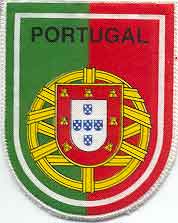|
Portugal - January 1994
Vicky Blitz
Lisbon, the capital city of Portugal, like Rome, is built on seven hills, and at various times was ruled by
Phoenicians, Greeks, Romans, Moors, and Moslems. It occupies the coast of a large, beautiful, natural
harbor. Small wonder, everyone wanted it!
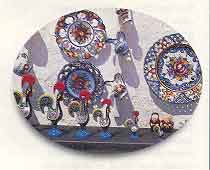
In the year 1755, the city of Lisbon, Portugal, had a day of total devastation. First they had an earthquake that leveled parts of the city. As a result of the earthquake, the city caught on fire for further destruction. Then, while the people were trying to put out the flames, a tsunami (tidal wave) came in and put out the
fires but killed an estimated 40,000 people. Two thirds of the city was
completely destroyed. The king survived but was so badly shaken by the
events he went into shock and didn't know what to do. According to
ledgend, one man stepped forward and said, "First, we get the living to bury the dead, and then we rebuild the
city." And they did, and today it is a thriving, beautiful, harbor city, a contrast between the old and the
modern.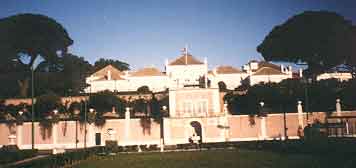
The walking tour of Alfama, the 800-year-old "poor" section of the city was fascinating with
its tiny, winding, cobbled alley streets. In my eyes it was very attractive and quaint, perhaps because it was so clean and the row houses individualistic. They use ceramic tiles on many of the houses. In fact, down near the port, there was a block or
two where all the row houses had tiles across the entire front, and each house had a different pattern of tile. All over Lisbon, you will come across
sidewalks composed of tiles or charcoal brick
laid out in patterns for us to walk on.
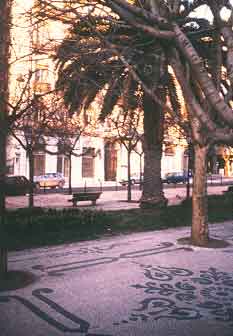
Codfish once was a very inexpensive fish eaten mostly by the poor of the city. However, today, they say, they have
365 ways to prepare it and it is the same price as other fish. It is traditional to eat cod on Christmas
Eve. Turkey is eaten on Christmas Day.
We visited the usual tourist attractions, St. Jerome's Monastery, the Coach Museum in a section of the President's Palace, Jeronimo's Monastery (with the tomb of Vasco da Gama), drove past Belem Tower (which was being restored and under construction), the Bull Ring to Pombal Statue and on along the grand Avenida da Liberdade. We Americans have our White House in Washington, D.C.; the
Portuguese president resides in the Pink House, built on a hill overlooking the
harbor, and, of course, we drove past it several times.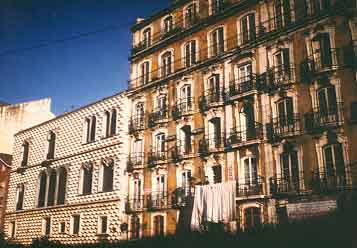
One night we took a tour of the "city at night" and had entertainment with our dinner. The dancers on the stage, pulled several of
us up on stage to dance with them. Of course, they brought me up there. I would feel more foolish to reject such an invitation than to participate. This has happened enough times over the years, I'm beginning to believe I must be wearing a
sign somewhere that reads "yeah, sure, I'll do it."
Although our Globus Tour group was in Portugal for only two days, I was impressed enough to want to return some day and see more of this lovely country. We spent the remainder of our seventeen-day trip in Spain, Gibraltar, and
Morocco.
THINK GLOBALLY - ACT LOCALLY - PRAY FOR WORLD PEACE
|
